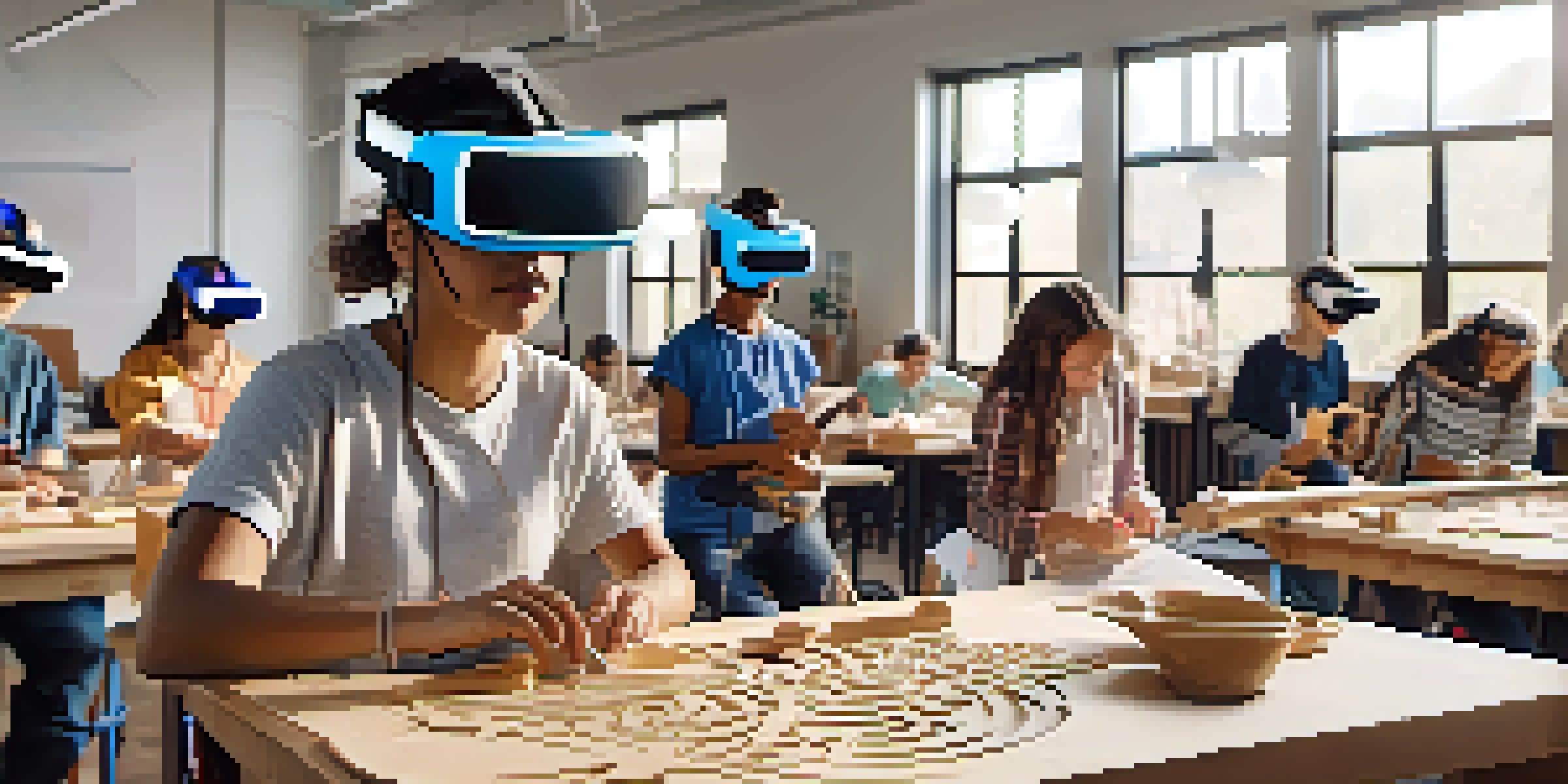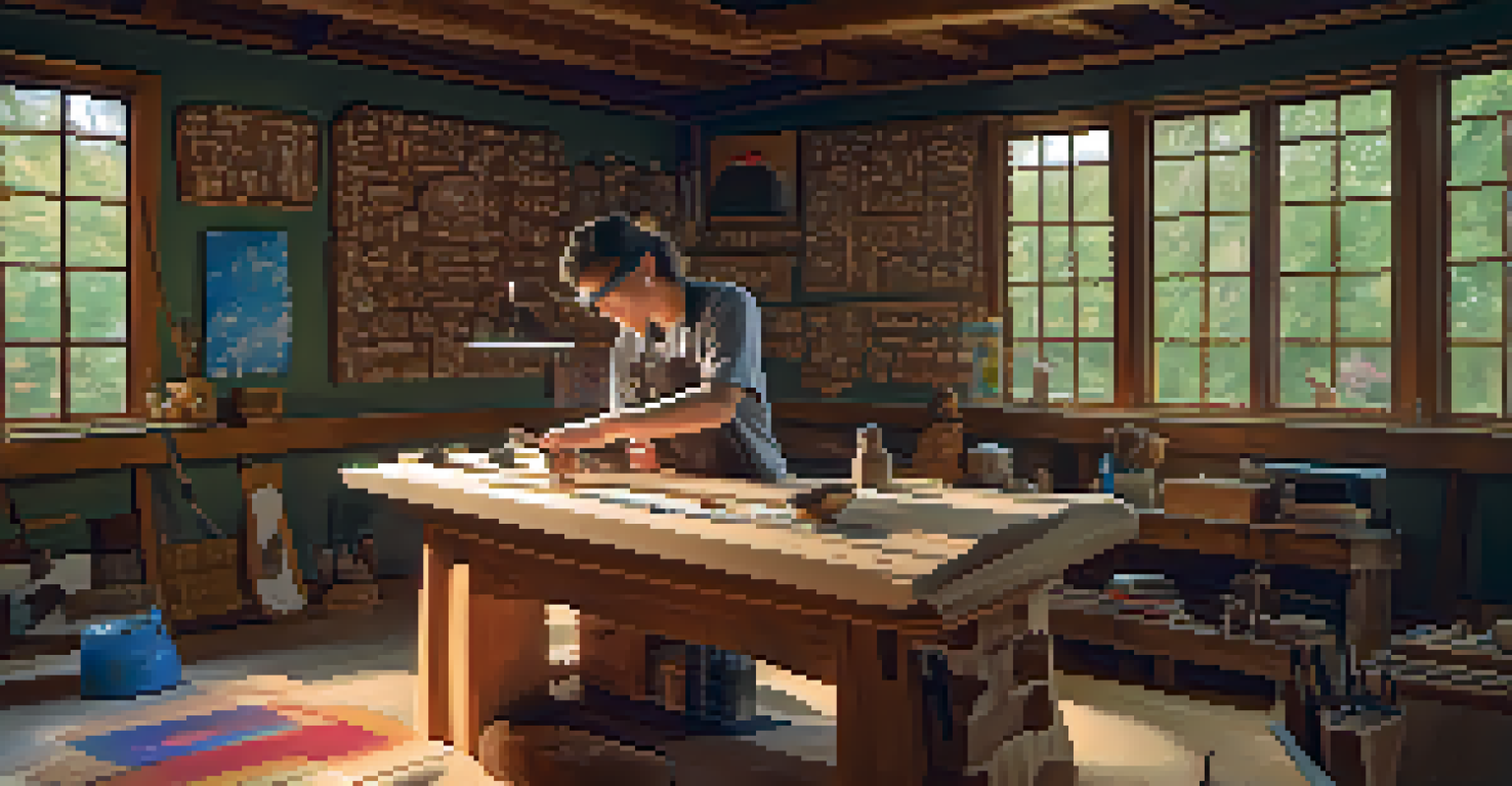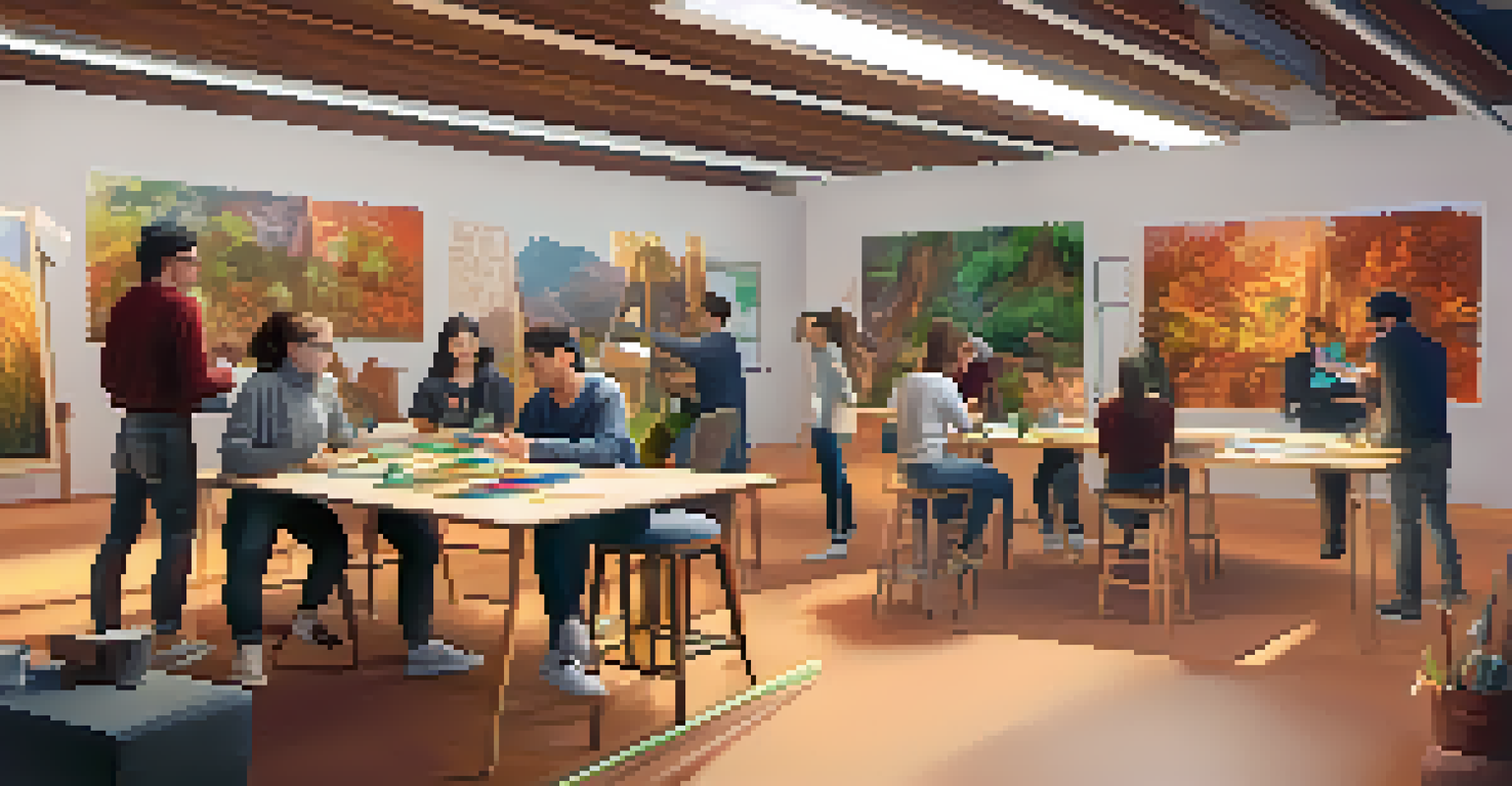Integrating VR Technologies in Carving Education Programs

Understanding VR and Its Potential in Education
Virtual Reality (VR) is a simulated experience that can replicate or create real-world environments. In education, this technology offers students a chance to engage with content in ways that traditional methods cannot. Imagine stepping into a 3D world where you can practice carving techniques without the fear of making mistakes in the real world.
Virtual reality is the next best thing to being there.
The immersive nature of VR can make learning more engaging and interactive. Students can visualize complex concepts and skills, leading to better retention of information. For example, they can see how different tools affect materials or how to approach a carving project step by step.
Moreover, VR can cater to various learning styles, whether visual, auditory, or kinesthetic. This flexibility makes it a powerful tool for carving education, ensuring that students of all backgrounds can find success in their learning journey.
Benefits of VR for Carving Students
One of the most significant advantages of VR in carving education is the opportunity for hands-on practice in a safe environment. Students can experiment with techniques and refine their skills without the risk of injury or damage to materials. This practice can build confidence, allowing for greater creativity when they transition to real-world projects.

Additionally, VR can provide instant feedback, helping students correct their mistakes on the spot. This immediate response helps reinforce learning and understanding, making it easier to grasp intricate carving techniques. It’s like having a personal tutor available 24/7, guiding them through the learning process.
VR Enhances Learning Engagement
Virtual Reality provides an immersive experience that makes learning more engaging and interactive for students.
Furthermore, VR can enhance collaboration among students. Group projects can be conducted in a virtual space, where students can share ideas and techniques, regardless of their physical location. This collaborative aspect fosters a sense of community and shared learning, which is beneficial for all involved.
Creating an Immersive Curriculum with VR
To effectively integrate VR into carving education, educators must design a curriculum that incorporates immersive experiences. This means identifying key concepts and skills that can be enhanced through virtual scenarios. For instance, students might engage in virtual workshops where they can learn from master carvers in real-time.
Technology will never replace great teachers, but technology in the hands of great teachers is transformational.
Curriculum designers can also utilize storytelling in VR to create engaging narratives around carving projects. By contextualizing lessons within a story, students may find themselves more invested in their learning. Imagine a virtual journey where they explore the history of carving while simultaneously practicing techniques relevant to different cultures.
Finally, it's essential to ensure that VR experiences are tailored to various skill levels. This approach allows students, whether beginners or advanced carvers, to benefit from the technology. By providing differentiated pathways, educators can support every learner's unique journey.
Choosing the Right VR Tools for Carving Education
Selecting the appropriate VR tools is crucial for an effective learning experience. Educators should consider hardware like VR headsets and controllers that are user-friendly and cost-effective. There are several options on the market, and finding the right fit can enhance the overall experience for students.
Software selection is equally important, with programs designed specifically for carving education offering tailored tutorials and simulations. These tools can simulate real-world carving challenges, allowing students to practice and learn in a controlled environment. It's essential to choose software that aligns with the curriculum and learning objectives.
Safe Practice Builds Confidence
VR allows carving students to practice techniques in a safe environment, boosting their confidence and creativity.
Additionally, educators should remain adaptable, as technology is constantly evolving. Staying up-to-date with the latest VR developments ensures that carving programs remain relevant and effective. Regularly exploring new tools and resources can help educators provide the best possible learning experience.
Overcoming Challenges in VR Integration
While the benefits of VR in carving education are promising, there are challenges to consider. One common hurdle is the cost associated with implementing VR technology. Schools must weigh the investment against the potential educational benefits, seeking funding or grants to alleviate financial burdens.
Another challenge is the learning curve associated with new technology. Both educators and students may need time to become familiar with VR tools and software. Offering training sessions can help bridge this gap, ensuring that everyone feels confident using the technology.
Lastly, accessibility can pose a barrier for some institutions. Not every school has the resources to incorporate VR into their programs. Exploring partnerships with tech companies or local organizations can provide the necessary support to enhance carving education through VR.
Real-World Examples of VR in Carving Education
Several educational institutions have begun to successfully integrate VR into their carving programs. For example, a community college in California implemented VR workshops that allowed students to practice complex carvings in a virtual setting. This initiative not only improved their skills but also attracted more students to the program.
Another notable example is a university that collaborated with a tech company to create a custom VR platform for their art students. This platform includes various carving scenarios, allowing students to explore different techniques and styles from the comfort of their classrooms. The program has received positive feedback, showcasing the effectiveness of VR in enhancing learning.
Adapting Curriculum for VR
Educators must design curricula that incorporate VR to create personalized and immersive learning experiences for all skill levels.
These real-world applications demonstrate the potential of VR in carving education. As more institutions embrace this technology, we can expect to see further innovations and improvements in teaching methods across the field.
The Future of Carving Education with VR Technologies
Looking ahead, the integration of VR technologies in carving education seems promising. As the technology advances, we can expect even more realistic simulations and immersive experiences that will revolutionize how students learn. Imagine being able to carve alongside renowned artists from around the world in a virtual studio setting.
Moreover, as VR becomes more widely adopted, it is likely that costs will decrease, making it accessible for more educational institutions. This democratization of technology can lead to a broader diversity of students entering the field, enriching the carving community as a whole.

Ultimately, the future of carving education with VR technologies is bright. As we continue to explore innovative approaches to teaching and learning, we can empower the next generation of carvers with the skills and creativity they need to thrive in their craft.